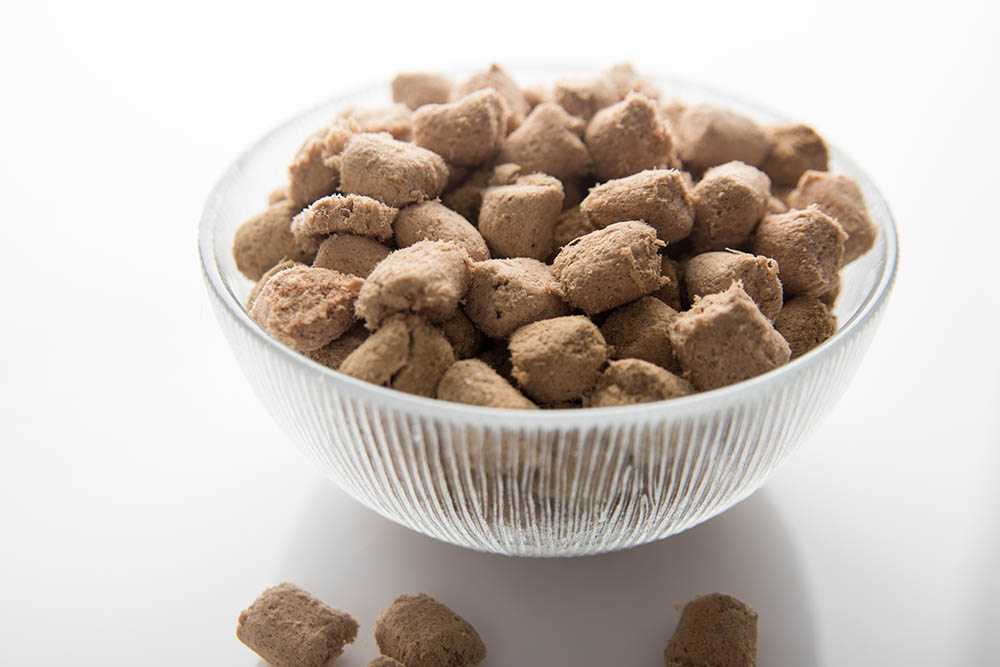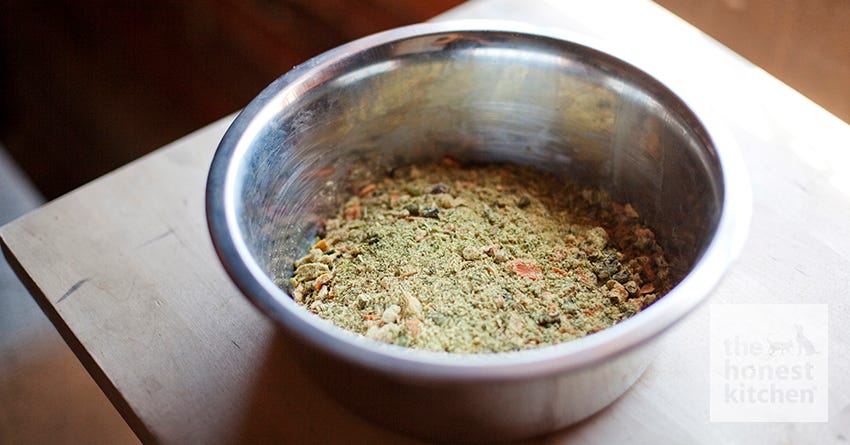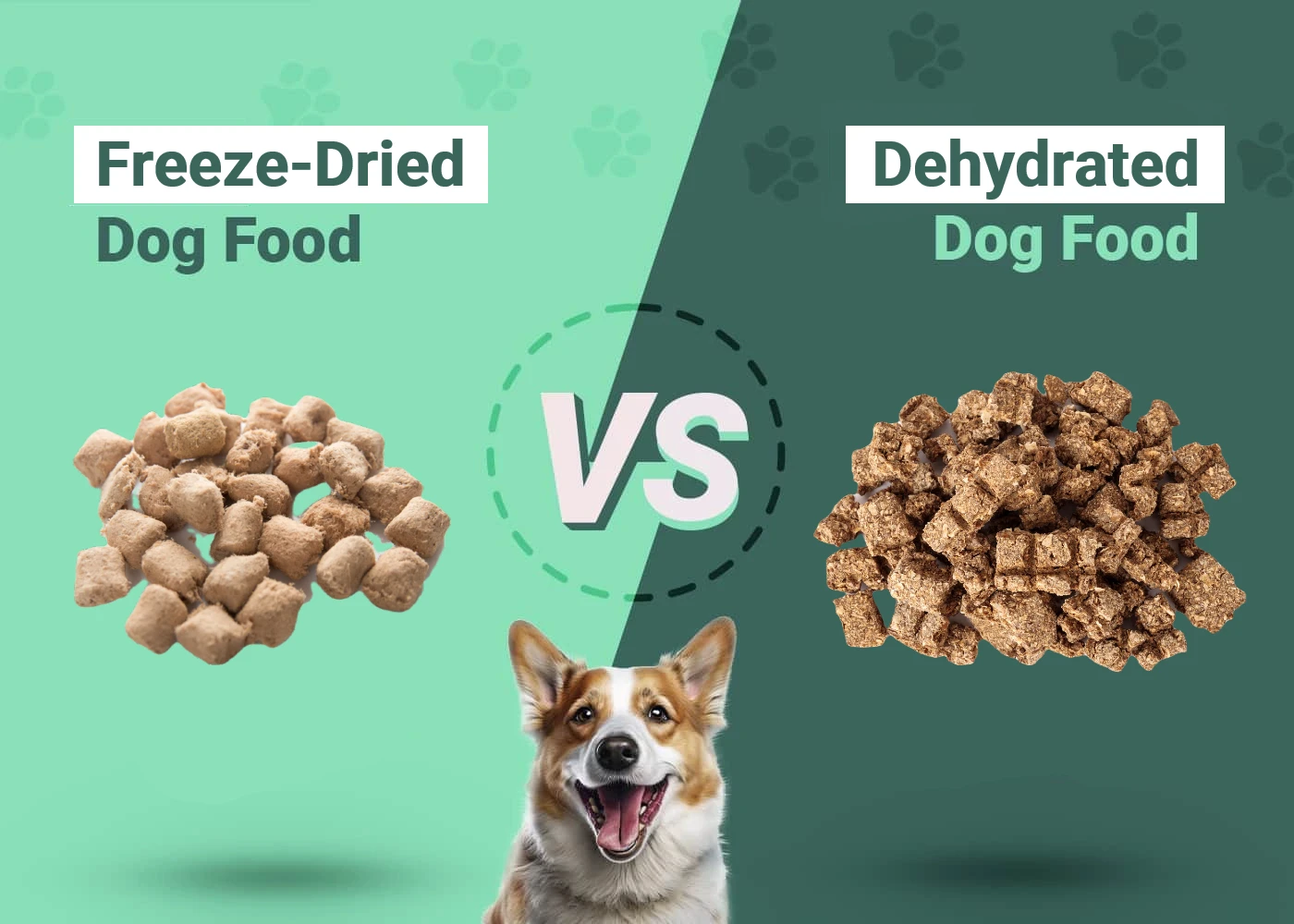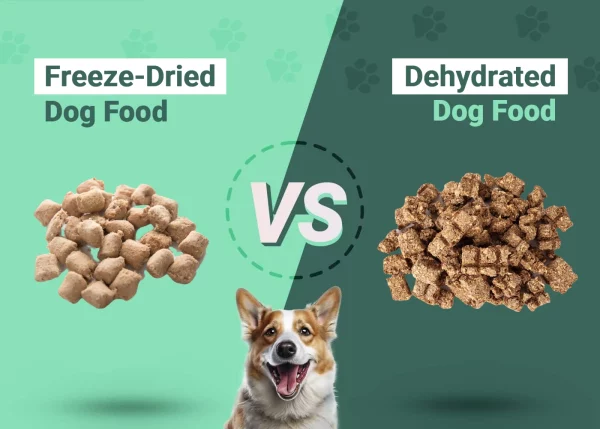Click to Skip Ahead
Many dog owners that are trying to feed their canine healthier foods choose either freeze-dried foods or dehydrated foods. On the shelf, both of these foods can look reasonably similar. However, they are actually quite different.
Luckily, the differences aren’t all that complicated to understand or explain. Let’s take a quick look at the differences between these foods, as well as which option you should choose.

Overview of Freeze-Dried Dog Food

Freeze-dried dog food is dehydrated under an extremely low temperature, which helps maintain the quality of the food and the nutrients. Basically, the food is frozen and then the pressure is added. This removes all of the water from the food.
You’re left with crunchy pieces of food that don’t contain any moisture. This allows them to maintain their freshness, as bacteria and mold require moisture to grow.
Freeze-dried food is often raw, as it has not been cooked. Therefore, it is often used by owners that would like to feed their dogs a raw diet without the mess. Plus, freeze-drying may kill some bacteria that are present at the time of production, making it safer than many raw foods. Additionally, high-pressure pasteurization is a sterilization method used for the sanitization of some freeze-dried raw foods.
- Long shelf life
- Convenient
- Safer than raw foods
- Expensive
Overview of Dehydrated Dog Food

Dehydrated dog food has also had its moisture removed, which leaves it looking, feeling, and tasting a lot like freeze-dried dog food. However, dehydrated food has its moisture removed through evaporation—the water is removed at a low heat temperature with air circulation applied.
To dehydrate food, the food is placed at a slightly elevated temperature for a very long time. Eventually, this removes the moisture content without really cooking the food. However, there is a possibility that certain nutrients are damaged after being heated for this long period.
Dehydrating food often kills a lot of the bacteria present. However, it won’t kill all bacteria. Therefore, this food is generally less safe than cooked food, though it is safer than raw food.
- Minimally processed
- Lasts a long time
- Convenient
- Often maintains taste
- Expensive

What Are the Differences Between Them?
On the outside, these foods look basically the same. However, they are quite different from each other. Here are some important aspects to keep in mind.
Moisture Percentage
- Winner: Dehydrated
Freeze-dried foods have a very low moisture percentage at around 1%. On the other hand, dehydration only removes about 90% of the moisture content.
Rehydration
- Winner: Freeze-Dried
You don’t necessarily have to rehydrate your dog’s food, but many owners decide to (largely because dogs find it more appetizing with moisture added). Generally, freeze-dried pet food takes about 3 minutes to rehydrate. On the other hand, dehydrated food can take as much as 10 minutes or even up to an hour.
It does depend on the size of the chunks, though. Larger chunks will always take longer to rehydrate.
Texture and Flavor
- Winner: Freeze-Dried
The freeze-drying process is much gentler on foods. It sucks all of the moisture out of the foods without cooking it, which ensures that the food maintains a similar texture and flavor. Once it is rehydrated, the food basically becomes exactly like it was previously.
However, dehydrating uses heat, which does cook the nutrients. Therefore, the taste and flavor will change and the food won’t be exactly like it was before when rehydrated.
Nutritional Value
- Winner: Freeze-Dried
Freeze drying does not use heat or affect the proteins, fats, and carbs in the food at all. Instead, it just sucks out the moisture. Therefore, the nutrients will be exactly the same.
On the other hand, the heat from dehydration can affect some of the nutrients inside the food. We don’t know exactly to what extent the nutrients are affected, though.
Price
- Winner: Dehydrated
Often, dehydrating food is easier and requires less fancy equipment. Therefore, these foods are often cheaper and more accessible to a wide range of dog owners.
On the other hand, freeze-dried food is notoriously expensive. The process takes a long time and requires a lot of equipment, adding to the production cost.
In Conclusion
Freeze-dried food is generally considered a better nutritional option in most cases. Plus, it often tastes better and rehydrates faster, making it easier to feed. In fact, freeze-dried food wins in almost any category but one—price.
Sadly, freeze-dried food is extremely expensive. While dehydrated food can often be more expensive than kibble, it is usually cheaper than freeze-dried foods. Therefore, for those on a budget, dehydrated foods are often more accessible.
Featured Image Credit:Freeze-dried: Anna Hoychuk, Shutterstock/Dehydrated: GUTSY Dehydrated Dog Food











